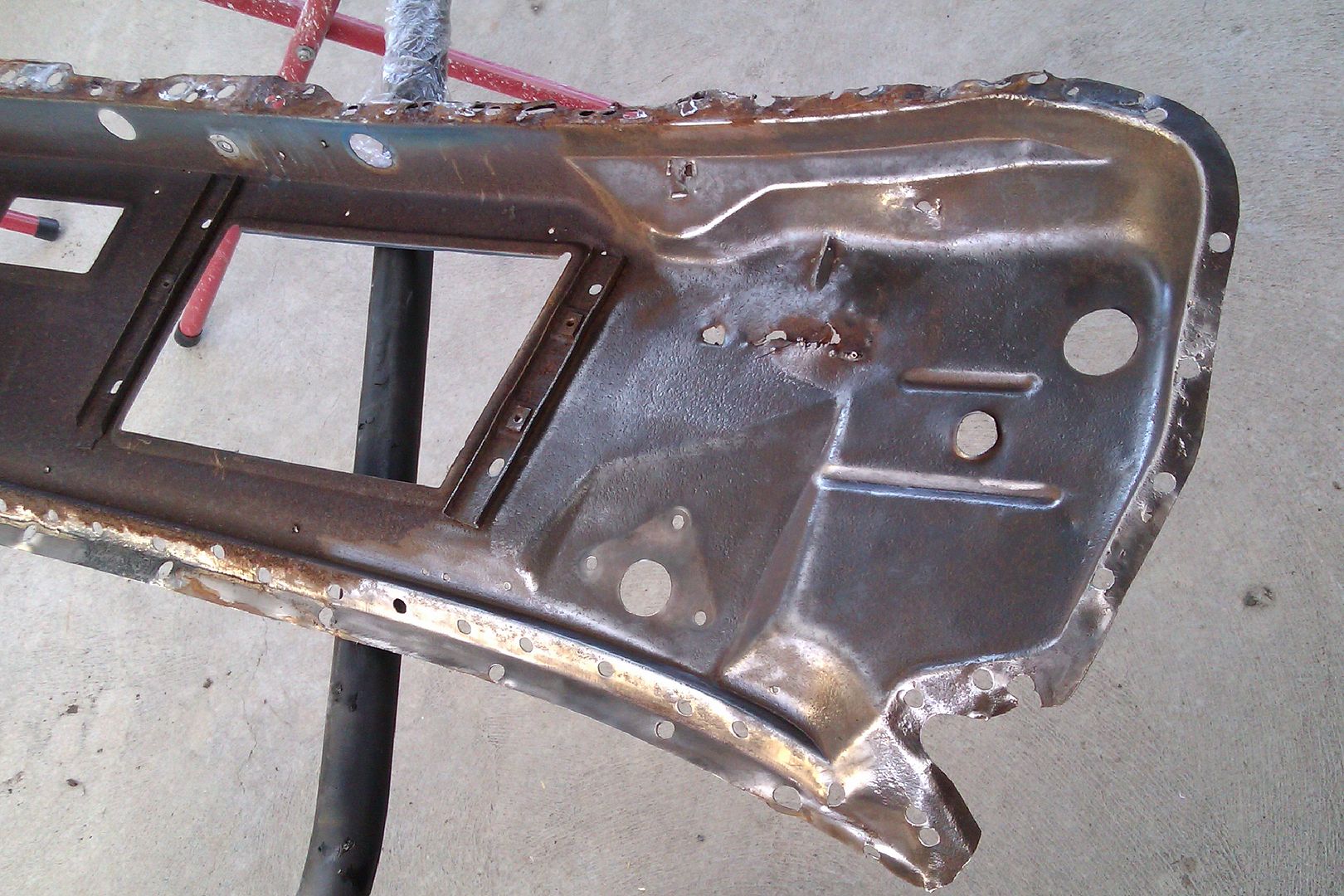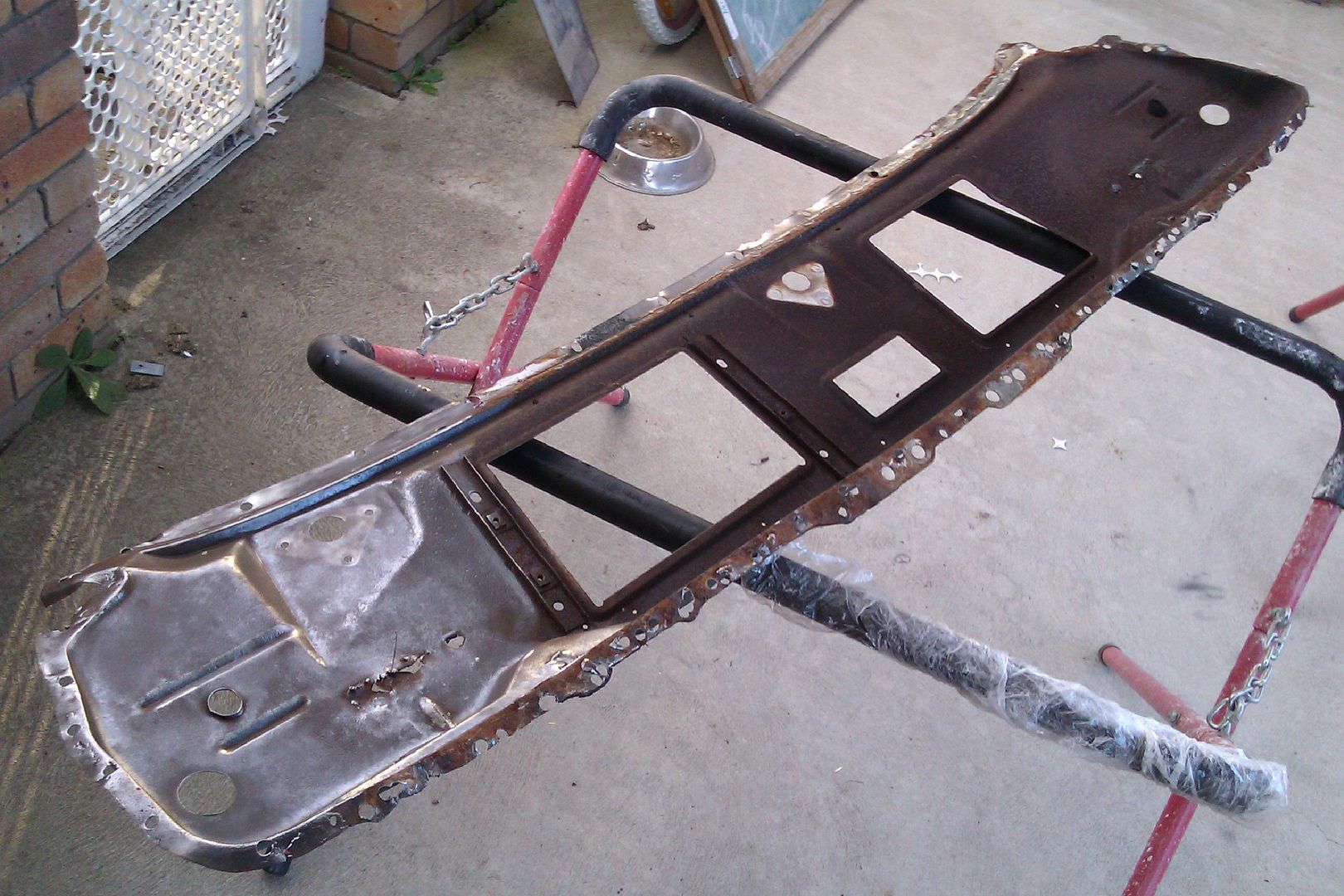A
Ash
I was hoping to ask for some opinions on what you would do with preparing the inner quarters and inner frame rails. I've stripped my car back, a 69 Mustang Mach 1, and have removed the drivers side floor due to some pretty shonky repairs done by the previous owner. Anyway, I'm not too sure which way to go with the inner of the rear quarters and the inner of the frame rails before I dive in and start putting in place new floor pans and etc.
Here are some pics, you can see the surface rust on the under side towards the top of the quarters. Obviously access for power tools is pretty restricted, I'm not sure which way to attack is best.



The inner of the front rails is much the same. Oh, and that thing laying in the rail was some type of impact attachment left behind by the PO. Also the bondo and expander foam was really all that was holding the pan and filling the large gaps. There was only 2 x 1 inch welds towards the rear of the rail holding the rail the to floor, that was it!


I have my SPI epoxy here now so wish to brush on any surfaces before they are sealed up again by new steel. I know I can't put it over rust, but wanted to check in you the experts here for what to do.
Thanks guys!
Here are some pics, you can see the surface rust on the under side towards the top of the quarters. Obviously access for power tools is pretty restricted, I'm not sure which way to attack is best.



The inner of the front rails is much the same. Oh, and that thing laying in the rail was some type of impact attachment left behind by the PO. Also the bondo and expander foam was really all that was holding the pan and filling the large gaps. There was only 2 x 1 inch welds towards the rear of the rail holding the rail the to floor, that was it!


I have my SPI epoxy here now so wish to brush on any surfaces before they are sealed up again by new steel. I know I can't put it over rust, but wanted to check in you the experts here for what to do.
Thanks guys!




